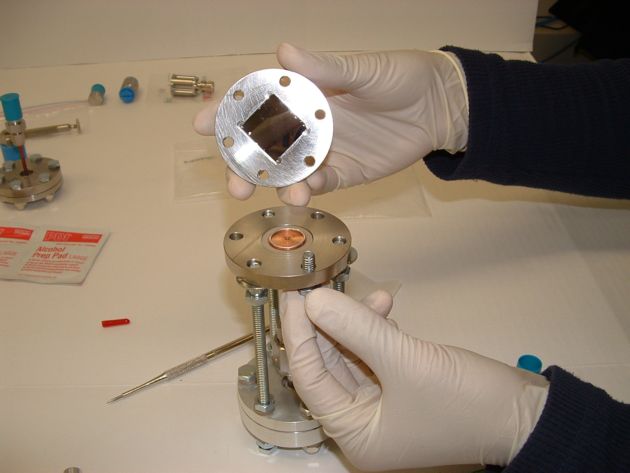Personal Nuclear Power: New Battery Lasts 12 Years

A new type of battery based on the radioactive decay of nuclear material is 10 times more powerful than similar prototypes and should last a decade or more without a charge, scientists announced this week.
The longevity would make the battery ideal for use in pacemakers or other surgically implanted devices, developers say, or it might power spacecraft or deep-sea probes.
You might also find these nuclear batteries running sensors and other small devices in your home in a few years. Such devices "don't consume much power," said University of Rochester electrical engineer Philippe Fauchet, "and yet having to replace the battery every so often is a real pain in the neck."
Fauchet told LiveScience the batteries could last a dozen years. They're being refined at Rochester. The technology was developed with the help financial support from the National Science Foundation and has been patented by BetaBatt Inc.
How it works
The technology is called betavoltaics. It uses a silicon wafer to capture electrons emitted by a radioactive gas, such as tritium. It is similar to the mechanics of converting sunlight into electricity in a solar panel.
Until now, betavoltaics has been unable to match solar-cell efficiency. The reason is simple: When the gas decays, its electrons shoot out in all directions. Many of them are lost.
"For 50 years, people have been investigating converting simple nuclear decay into usable energy, but the yields were always too low," Fauchet explained. "We've found a way to make the interaction much more efficient, and we hope these findings will lead to a new kind of battery that can pump out energy for years."
Fauchet's team took the flat silicon surface, where the electrons are captured and converted to a current, and turned it into a three-dimensional surface by adding deep pits.
Each pit is about one micron wide. That's four ten-thousandths of an inch. They're more than 40 microns deep.
Tritium is a radioactive form of hydrogen. Mixed with chemicals that emit light, it is used to illuminate exit signs without electricity -- the sort commonly found in schools and other public buildings.
"It is safe and can be implanted in the body," Fauchet said. "The energetic particles emitted by tritium do not penetrate inside the skin."
Tritium emits only low energy particles "that can be shielded by very thin materials, such as a sheet of paper," said Gadeken of BetaBatt. "The hermetically-sealed, metallic BetaBattery cases will encapsulate the entire radioactive energy source, just like a normal battery contains its chemical source so it cannot escape."
The device is detailed in today's issue of Advanced Materials.
Improvements needed
The manufacturing process is standard to the semiconductor industry, so no other technology breakthroughs are needed to bring the batteries to market. Still, don't expect anything on the store shelves for at least two years, Fauchet said. His team is now working to improve the manufacturing process, aiming for batteries many times more efficient than those announced today.
"If we are as successful as we think we may be, it will take less than five years before this technology is adopted," he said.
Graduate student Wei Sun of the University of Toronto was lead author on the paper describing the work.
More Stories
- Personal Power: Bendable Organic Solar Cells
- Palmtop Nuclear Fusion Device Invented
- Power of the Future: 10 Ways to Run the 21st Century
- HP Envisions Alternative to Transistors
Power of the Future
Microscopic Art
Get the world’s most fascinating discoveries delivered straight to your inbox.
Robert is an independent health and science journalist and writer based in Phoenix, Arizona. He is a former editor-in-chief of Live Science with over 20 years of experience as a reporter and editor. He has worked on websites such as Space.com and Tom's Guide, and is a contributor on Medium, covering how we age and how to optimize the mind and body through time. He has a journalism degree from Humboldt State University in California.




